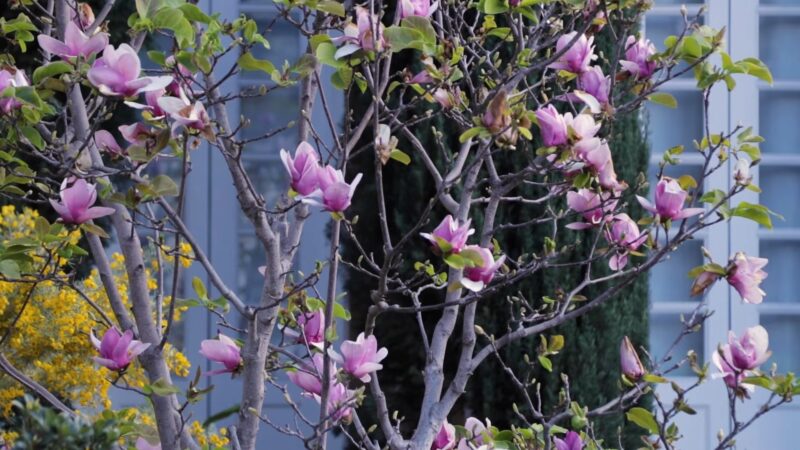As a seasoned gardener, I’ve had the privilege of watching Oregon’s landscapes transform through each season. This state, known for its varied climates and rich soil, is a haven for many plants.
But there’s something inherently magical about the flowering trees that burst forth in a riot of colors come spring. They dot the Oregon landscape, serving as reminders that nature continually renews itself. Today, I’ll share with you seven of the best flowering trees that thrive in Oregon, offering beauty, shade, and even some delightful fragrances.
1. Dogwood (Cornus florida)
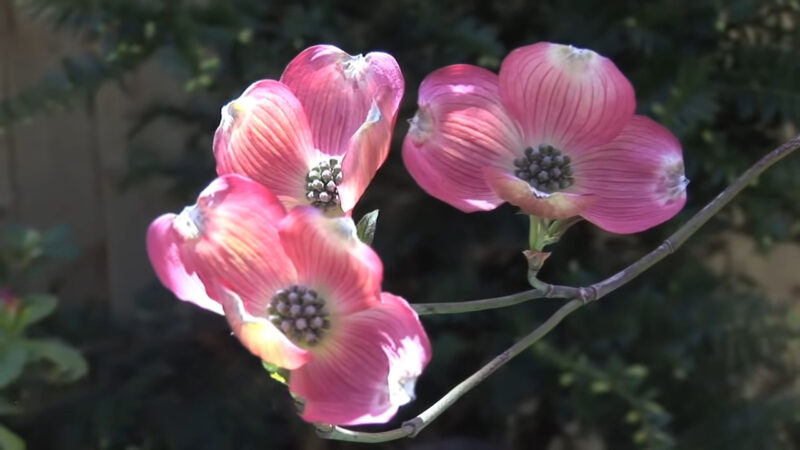
The Dogwood is more than just a tree; it’s a symbol of spring in the Pacific Northwest.
Characteristics
Dogwoods are medium-sized trees, often reaching between 20-40 feet in height. They are renowned for their large, bract-like flowers, which appear before the leaves in early spring.
- Color variations: White is the most common, but pink and red varieties also exist.
- Leaves: Oval, turning a radiant red in the fall.
- Fruit: Bright red berries enjoyed by birds.
Growing Conditions
These trees prefer partial shade but can tolerate full sun in cooler regions of Oregon. They love well-drained soil and regular watering, especially during dry periods.
2. Cherry Blossom (Prunus serrulata)
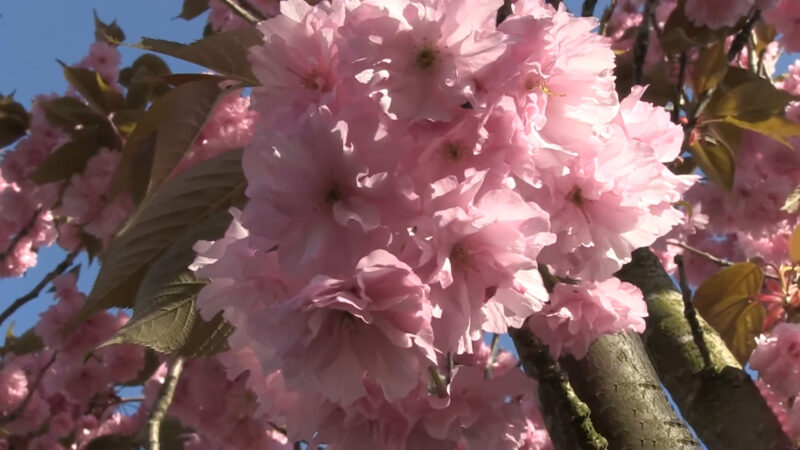
No list of flowering trees would be complete without the ethereal Cherry Blossom.
Characteristics
Known for their brief yet breathtaking bloom period, cherry blossoms offer a canopy of soft pink flowers that attract admirers from near and far.
- Bloom period: Early to mid-spring.
- Height: Varies between 15-25 feet.
- Leaves: Green leaves that turn golden-yellow in the fall.
Growing Conditions
Cherry blossoms thrive in full sun and require well-draining soil. They’re hardy but benefit from a layer of mulch to maintain soil moisture.
3. Magnolia (Magnolia x soulangeana)
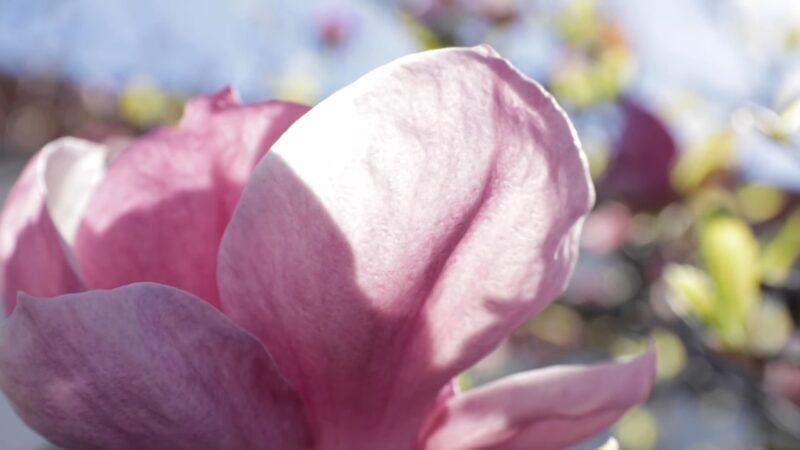
Magnolias are ancient trees with fossils dating back millions of years.
Characteristics
This tree is easily recognized by its massive, fragrant flowers that bloom in early spring.
- Flower size: Often larger than a hand, with petals spanning outwards.
- Colors: Primarily pink and white, with variations.
- Leaves: Glossy green leaves that provide ample shade.
Growing Conditions
While they appreciate full sun, Magnolias can also thrive in partial shade. They’re not overly fussy about soil but do prefer it to be moist.
4. Redbud (Cercis canadensis)
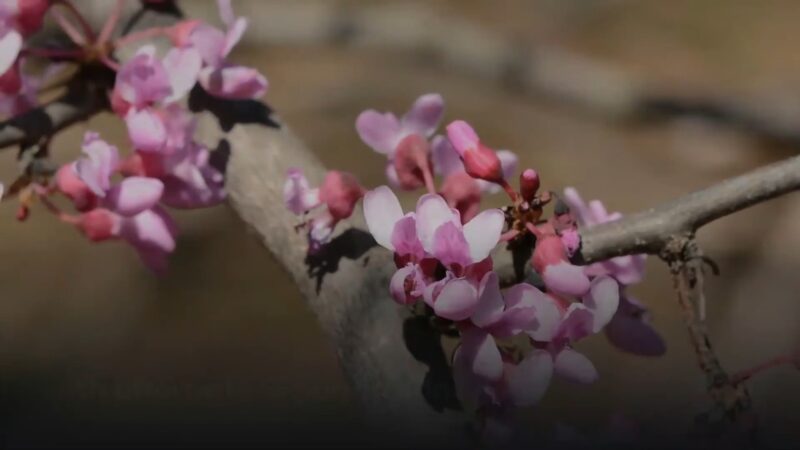
The Redbud is a harbinger of spring, with its vivid blossoms appearing even before its leaves.
Characteristics
Known for its heart-shaped leaves, the Redbud is a medium-sized tree that brightens up any garden.
- Bloom time: Early spring.
- Height: Usually between 20-30 feet.
- Leaves: Green, turning yellow in the fall.
Growing Conditions
Redbuds are flexible, tolerating various soil types as long as they’re well-draining. They love the sun but can also flourish in light shade.
5. Crabapple (Malus)
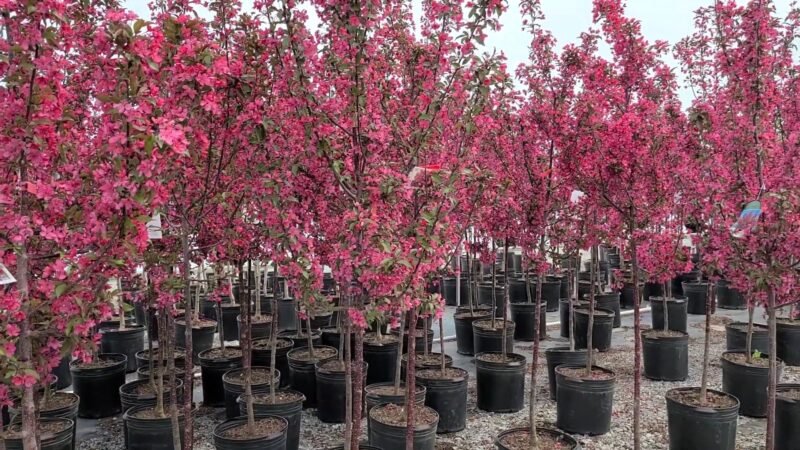
The Crabapple is not only beautiful, but its fruit also provides food for wildlife.
Characteristics
Varieties differ in size and flower color, but all Crabapples are deciduous with a stunning spring display.
- Bloom colors: Ranges from white to deep pink.
- Fruit: Small apples, varying in color, attract birds in the fall.
- Height: 15-25 feet, depending on the variety.
Growing Conditions
Preferring full sun, Crabapples also need well-draining soil. Regular pruning helps maintain their shape and health.
6. Tulip Tree (Liriodendron tulipifera)
One of the tallest eastern hardwoods, the Tulip Tree, also offers unique blooms.
Characteristics
Named for its flowers that resemble tulips, this tree stands out in any landscape.
- Bloom time: Late spring.
- Height: Can grow up to 90 feet or more.
- Leaves: Four-lobed leaves that turn golden-yellow in the fall.
Growing Conditions
Loving full sun, the Tulip Tree is adaptable to various soils but thrives in deep, rich soils.
7. Lilac (Syringa reticulata)
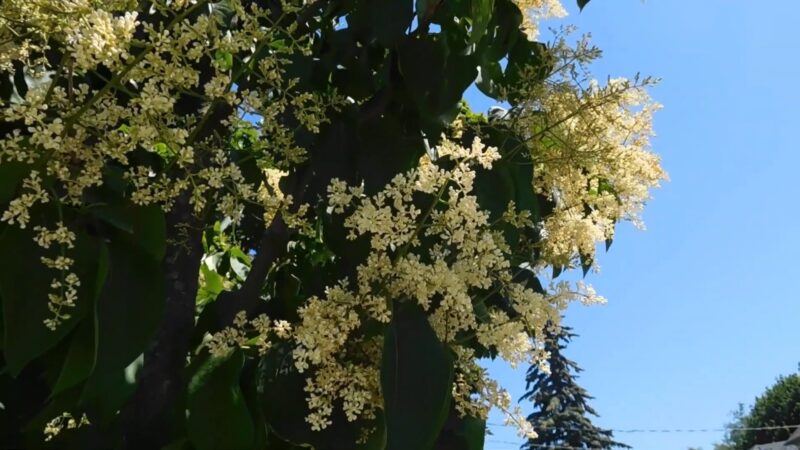
While most associate lilacs with shrubs, tree varieties exist and are just as captivating.
Characteristics
This tree version of the beloved lilac brings fragrant clusters of flowers every spring.
- Bloom colors: Typically white, contrasting its deep green leaves.
- Height: Ranges between 20-30 feet.
- Leaves: Dark green, offering a dense canopy.
Growing Conditions
Lilac trees prefer full sun and well-draining soil. Annual pruning after blooming ensures a healthy growth pattern.
Caring for Flowering Trees
Oregon’s climate and rich soil make it an ideal location for many flowering trees. However, to maintain their beauty and health, it’s crucial to understand and implement proper care techniques.
Each species may have its unique needs, but there are some general guidelines to follow to ensure these trees thrive. Here’s a guide to the best ways to care for flowering trees in Oregon.
Watering Techniques
Consistent and proper watering is the cornerstone of any plant’s health, including flowering trees.
- Initial Watering: Newly planted trees require more frequent watering. The soil should be kept consistently moist for the first several months.
- Deep Watering: It’s better to water deeply and less frequently than shallowly and often. This ensures the moisture reaches deeper roots and encourages them to grow downwards.
- Mulching: Mulch around the base of the tree can help retain moisture, reduce weeds, and protect against temperature extremes.
Pruning Essentials
Pruning is essential not only for aesthetics but also for the overall health of the tree.
- When to Prune: The best time is usually late winter or early spring when the tree is dormant. However, for spring-flowering trees, prune them just after they’ve bloomed to avoid cutting off next year’s flower buds.
- Remove the 3 D’s: Always remove Dead, Diseased, or Damaged branches.
- Thinning: This technique allows light and air to penetrate the tree’s canopy, reducing the risk of disease.
Soil and Fertilization
The health of a tree is often a reflection of the soil it’s planted in.
- Soil Testing: Before planting or fertilizing, consider getting a soil test. This helps determine the pH level and nutrient profile.
- Fertilizing: Based on the soil test results, choose a balanced fertilizer. Most flowering trees don’t need excessive fertilizing, but a yearly application can help boost their growth and flowering potential.
- Organic Matter: Mixing in compost or other organic matter can improve soil texture, enhance its nutrient content, and promote beneficial microbial activity.
Pest and Disease Management
Flowering trees can sometimes become a target for pests and diseases. Prevention is always better than cure.
- Regular Inspection: Frequently check the leaves, branches, and trunk for signs of pests or diseases.
- Beneficial Insects: Encourage beneficial insects like ladybugs and praying mantises that can naturally control harmful pests.
- Natural Treatments: If pests or diseases are spotted, always opt for organic or natural treatments first before resorting to harsher chemical alternatives.
FAQs
How can I protect my flowering trees from harsh winter conditions?
To safeguard against winter’s chill, you can wrap the lower trunk with a commercial tree wrap or burlap. This helps prevent sunscald and frost cracks. Additionally, ensure the tree is well-watered going into the winter, as dry roots can be more susceptible to cold damage.
How often should I repot or transplant my young flowering tree?
Young trees, especially if they started in containers, should ideally be transplanted into the ground within their first year. However, if you’re keeping a tree in a pot, consider repotting every 2-3 years or when you notice slow growth, which may indicate the tree has become root-bound.
Are there specific signs of underwatering or overwatering in flowering trees?
Yes, signs of underwatering include wilting, yellowing leaves, and dry soil at a depth of a couple of inches. Overwatering signs include yellow or brown leaves that feel soft and mushy, a rotting base, and soil that’s consistently wet.
Do flowering trees require a particular type of mulch?
Organic mulches, such as wood chips, straw, or compost, are recommended for flowering trees as they decompose over time, adding nutrients back to the soil.
The specific type might depend on aesthetic preferences and availability, but the function remains the same: retaining moisture, suppressing weeds, and regulating soil temperature.
When’s the best time to apply fertilizer to my flowering tree?
The optimal time to fertilize most flowering trees is in early spring, just before new growth begins. This gives the tree essential nutrients to support its growth and flowering.
However, always follow the specific guidelines of your chosen fertilizer and consider the unique needs of your tree.
Can I grow flowering trees in containers, and if so, how do I care for them?
Yes, many of them can be grown in containers, especially dwarf varieties. Care for container-grown trees includes ensuring proper drainage in the pot, regular watering (as containers dry out faster), and possibly more frequent fertilizing since nutrients can leach out with watering.
Additionally, monitor the growth and consider repotting when it becomes too large for its current container.
Final Words
When considering which trees to add to your Oregon garden, keep in mind that each tree comes with its distinct characteristics and needs. However, the delight of seeing them bloom and grow is a shared experience.
Visit your nearby plant nursery, garden center or country fair to purchase seeds or saplings. So, go forth, plant, and let nature’s beauty envelop you!
